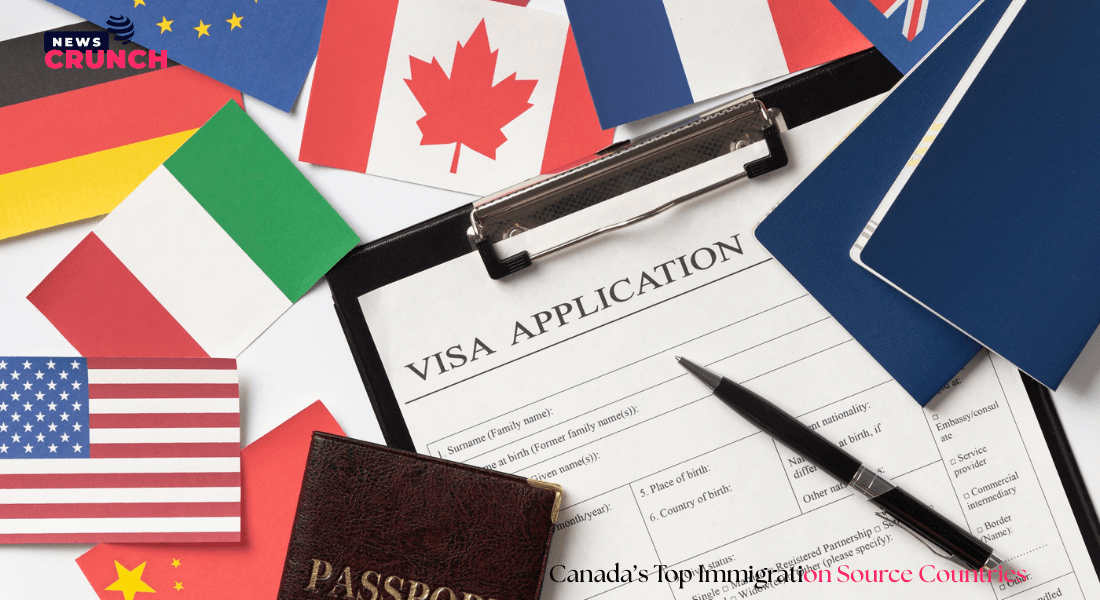Introduction: Significance of Canada’s Immigration Trends in 2025–2026
Canada’s economy, high quality of life, and inclusive policies continue to attract immigrants worldwide. Consequently, as we look ahead to 2025–2026, the country remains a top destination for skilled workers, international students, and family reunification applicants. In particular, the significant contributions of immigrants to Canada’s labour force, especially in addressing shortages in healthcare, technology, and skilled trades, are vital for our economic growth. Furthermore, Canada’s immigration landscape is significantly shaped by government policies, including Express Entry and Provincial Nominee Programs (PNPs). These policies ensure that Canada welcomes applicants who meet economic, educational, and language criteria. Additionally, the demographic trends reveal a growing demand from countries with strong academic backgrounds and professional skills. Moreover, Canada’s commitment to multiculturalism and social integration has made it a preferred destination for families seeking long-term stability.
Therefore, understanding the top source countries and their contributions is crucial for policymakers, businesses, and educational institutions to plan for labour needs, cultural integration, and social services. This insight also benefits prospective immigrants in evaluating opportunities and preparing for settlement in Canada. By analysing recent statistics, we can identify patterns and emerging trends that will shape Canada’s immigration landscape over the next two years.
India: Leading the Immigration Wave
India remains Canada’s largest source of immigrants, driven by the country’s vast population, English proficiency, and intense focus on higher education. In 2025–2026, Indian immigrants are expected to account for a significant portion of skilled worker entries, particularly in IT, engineering, and healthcare, offering exciting opportunities for professional growth.
Canada’s Express Entry system favours applicants with strong academic credentials and work experience, making India a consistent contributor to skilled labour. Indian students pursuing higher education in Canada also represent a potential pathway for permanent residency.
Family reunification programs further boost Indian immigration, as many professionals sponsor spouses, children, or parents. This results in diverse communities that contribute to Canada’s multicultural fabric. Economic stability and opportunities for entrepreneurship are additional motivating factors.
Top Canadian Immigration Categories for Indian Nationals
| Category | 2025–2026 Estimate | Key Notes |
| Skilled Worker | 35,000 | IT, Engineering, Healthcare |
| Students | 15,000 | Pathway to PR through PGWP |
| Family Sponsorship | 10,000 | Spouses, Children, Parents |
| Business/Entrepreneur | 2,500 | Startups and Investment Programs |
Indian immigrants continue to shape Canada’s workforce, especially in urban centres like Toronto, Vancouver, and Calgary, fostering innovation and economic growth.
China: Growing Skilled Migration
China consistently ranks among the top immigrant source countries due to its large population of highly educated professionals. Chinese immigrants enter Canada through skilled worker programs, student pathways, and business immigration streams.
Skilled professionals from China contribute to Canada’s growing sectors, including technology, scientific research, and healthcare. Chinese students often transition to permanent residency through the Post-Graduation Work Permit (PGWP), further strengthening the talent pipeline.
Family reunification remains essential, with Chinese immigrants sponsoring spouses and dependents. Urban centres with established Chinese communities, such as Vancouver and Toronto, provide a supportive environment for new arrivals.
Key Immigration Metrics for Chinese Nationals
| Category | 2025–2026 Estimate | Key Notes |
| Skilled Worker | 20,000 | Tech and Research Professionals |
| Students | 12,000 | Universities in Ontario & BC |
| Family Sponsorship | 8,000 | High family reunification rates |
| Business/Entrepreneur | 1,500 | Investment and startups |
China’s contribution is crucial for sectors requiring advanced skills, and continued collaboration between Canadian and Chinese institutions supports talent development.

Philippines: Vital Contribution to Healthcare and Services
The Philippines is a major contributor to Canada’s healthcare and service sectors. Many Filipino immigrants work as nurses, caregivers, and hospitality professionals, addressing labour shortages in these fields.
Programs such as the Temporary Foreign Worker and Provincial Nominee Programs facilitate migration. Healthcare employers actively recruit from the Philippines, offering pathways to permanent residency. Family sponsorship programs also encourage long-term settlement.
Top Sectors for Filipino Immigrants
| Sector | 2025–2026 Estimate | Notes |
| Healthcare | 15,000 | Nurses, Caregivers |
| Hospitality | 5,000 | Hotels and Tourism |
| Skilled Worker | 4,000 | Engineering & IT |
| Family Sponsorship | 6,000 | Spouses and Dependents |
Filipino communities contribute economically and culturally, enriching Canada’s multicultural environment.
Nigeria: Emerging Source for Skilled Professionals
Nigeria is increasingly becoming a source of skilled immigrants, particularly in IT, healthcare, and education. Nigerian professionals are drawn by Canada’s economic stability, multicultural society, and immigration pathways like Express Entry and Provincial Nominee Programs.
Nigerian students pursue higher education, often transitioning to permanent residency through work opportunities. Family sponsorship programs help form tight-knit communities.
Nigerian Immigration Overview
| Category | 2025–2026 Estimate | Notes |
| Skilled Worker | 6,500 | IT and Healthcare |
| Students | 3,000 | University programs |
| Family Sponsorship | 2,500 | Spouses & Dependents |
| Business | 500 | Entrepreneurship |
Nigerian immigrants strengthen Canada’s labour market and add diversity to communities across Ontario and Alberta.
United States: Reverse Migration for Opportunities
While smaller in numbers, U.S. citizens migrate to Canada for career opportunities, education, and lifestyle preferences. High-skilled professionals, particularly in technology, finance, and healthcare, are attracted to Canada’s strong economy and quality of life.
U.S. Migration Highlights
| Category | 2025–2026 Estimate | Notes |
| Skilled Worker | 3,500 | Tech & Healthcare |
| Students | 1,500 | University programs |
| Family Sponsorship | 1,200 | Spouses & Dependents |
U.S. migration complements other immigrant communities, contributing expertise and diversity.
United Kingdom: Skilled and Student Migration
The UK remains a notable source of professionals and students. Many British immigrants enter Canada through Express Entry, PNPs, or study-to-work pathways. Their strong language skills and education levels make integration seamless.
UK Immigration Overview
| Category | 2025–2026 Estimate | Notes |
| Skilled Worker | 3,000 | IT & Finance |
| Students | 1,200 | Universities across Canada |
| Family Sponsorship | 800 | Spouses & Dependents |
UK immigrants contribute to innovation, business, and academia in Canada.
France: Emerging Source for Skilled Professionals
France is an emerging source of skilled immigrants, particularly in tech, healthcare, and academia. Programs like Express Entry attract French professionals seeking international career opportunities.
French Immigration Metrics
| Category | 2025–2026 Estimate | Notes |
| Skilled Worker | 1,800 | Tech & Healthcare |
| Students | 900 | Academic programs |
| Family Sponsorship | 400 | Spouses & Dependents |
French immigrants help diversify Canada’s workforce and enrich cultural exchange.
Conclusion: Strategic Insights for Canada
Canada’s immigration in 2025–2026 reflects a diverse mix of countries contributing skilled professionals, students, and families. India and China dominate the skilled worker pool, while the Philippines ensures critical support in healthcare. Emerging sources like Nigeria, Pakistan, and France add dynamism to the labour market.
Understanding these trends is essential for policymakers, businesses, and institutions. It ensures efficient labour allocation, effective integration strategies, and sustained economic growth. For prospective immigrants, these insights guide preparation and decision-making. Canada’s commitment to welcoming talent worldwide continues to strengthen its economy, culture, and global competitiveness.
FAQs
Q1: Which countries send the most immigrants to Canada in 2025–2026?
India, China, and the Philippines are the top sources, followed by Nigeria, Pakistan, the US, the UK, and France, which contribute skilled workers, students, and families to Canada’s labor market.
Q2: Why is India the largest source of Canadian immigrants?
India leads due to its large, skilled workforce, high English proficiency, strong education system, and active participation in Express Entry, student programs, and family sponsorship streams.
Q3: How do Chinese immigrants contribute to Canada’s economy?
Chinese immigrants bring advanced technology, research, and healthcare skills, while students often transition to permanent residency, supporting innovation and addressing labour demands.
Q4: What sectors benefit from Filipino immigration to Canada?
Filipino immigrants mainly support healthcare, caregiving, hospitality, and service industries, helping to fill labour shortages and providing cultural and economic contributions nationwide.
Q5: Are Nigerian and Pakistani immigrants increasing in Canada?
Yes, the number of skilled professionals and students from Nigeria and Pakistan is growing, especially in IT, healthcare, and education, supported by Express Entry and provincial nominee programs.
Q6: How does family sponsorship affect immigration trends?
Family reunification programs allow immigrants to sponsor spouses, children, and parents, strengthening community ties and supporting long-term settlement across Canada.
Q7: Which Canadian cities attract the most immigrants?
Toronto, Vancouver, Calgary, and Montreal are top destinations due to strong job markets, educational institutions, diverse communities, and comprehensive settlement support for newcomers.


